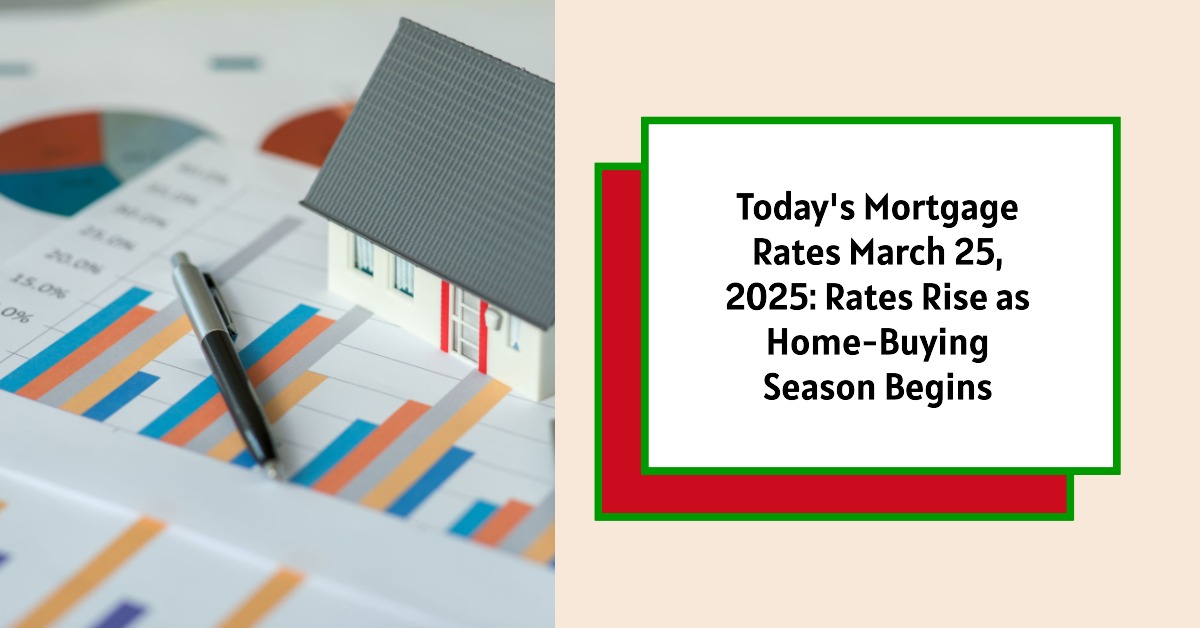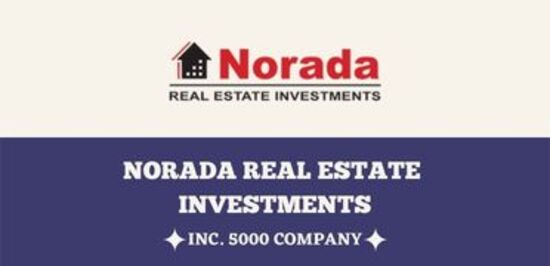Today's mortgage rates have experienced a slight uptick, a trend observed at the commencement of the spring home-buying season. According to the latest data, the average 30-year fixed mortgage rate stands at 6.58%, while the 15-year fixed mortgage rate is currently at 5.97%. It's crucial to understand the factors driving these shifts and what they mean for prospective homeowners and those considering refinancing.
Mortgage Rates Today, March 25, 2025: Rates See Slight Increase as Spring Home-Buying Season Arrives
Key Takeaways:
- 30-Year Fixed Mortgage Rate: Increased to 6.58%. This benchmark rate is a popular choice for its stability and predictability, making it a crucial indicator for the housing market.
- 15-Year Fixed Mortgage Rate: Increased to 5.97%. Offers a quicker path to homeownership and significant long-term interest savings, though with higher monthly payments.
- Home-Buying Season: Spring traditionally brings increased activity to the housing market, with more homes listed and heightened competition among buyers.
- Rate Outlook: The prevailing sentiment is that rates will likely remain elevated in the near future, with potential fluctuations influenced by economic performance and Federal Reserve actions.
- Refinance Rates: Generally, refinance rates are observed to be higher than purchase rates.
Today's Mortgage Rates: A Detailed Look
Understanding the specific mortgage rates available today is crucial for informed decision-making. Here is a breakdown of current rates based on the latest information from Zillow:
| Loan Type | Rate |
|---|---|
| 30-Year Fixed | 6.58% |
| 20-Year Fixed | 6.36% |
| 15-Year Fixed | 5.97% |
| 5/1 ARM | 6.72% |
| 7/1 ARM | 6.76% |
| 30-Year VA | 6.10% |
| 15-Year VA | 5.63% |
| 5/1 VA | 5.13% |
It's essential to recognize that these figures represent national averages. Your individual rate will depend on a range of personalized factors, including your credit score, down payment amount, debt-to-income ratio, and the specific terms offered by your lender.
Delving Deeper into Today's Mortgage Refinance Rates
For homeowners contemplating a refinance, examining current refinance rates is paramount. Here's a comprehensive overview of today's refinance rates, leveraging data from Zillow:
| Loan Type | Rate |
|---|---|
| 30-Year Fixed | 6.56% |
| 20-Year Fixed | 6.18% |
| 15-Year Fixed | 5.96% |
| 5/1 ARM | 6.75% |
| 7/1 ARM | 6.59% |
| 30-Year VA | 5.96% |
| 15-Year VA | 5.47% |
| 5/1 VA | 6.14% |
| 30-Year FHA | 6.09% |
| 15-Year FHA | 5.75% |
The difference between purchase and refinance rates often stems from the perceived risk associated with refinancing. Lenders may view refinances as slightly riskier due to factors like the homeowner's existing debt and the potential for changes in their financial situation.
30-Year vs. 15-Year Fixed Mortgage Rates: A Comparative Analysis
The choice between a 30-year and 15-year fixed-rate mortgage represents a fundamental decision for homebuyers. A closer look reveals the critical differences:
- Interest Rate Dynamics: 15-year mortgages are generally offered at lower interest rates compared to their 30-year counterparts. This reflects the reduced risk for the lender due to the shorter loan term.
- Monthly Payment Considerations: The accelerated repayment schedule of a 15-year mortgage results in higher monthly payments. This requires a greater upfront commitment from the borrower.
- Total Interest Savings: The most significant advantage of a 15-year mortgage lies in the substantial reduction in total interest paid over the life of the loan. This can translate into tens or even hundreds of thousands of dollars saved.
To illustrate the financial implications, consider a hypothetical $400,000 mortgage. At the current 30-year fixed rate of 6.58%, the monthly payment would approximate $2,549, with total interest paid reaching a staggering $517,767 over the loan's duration. Conversely, a 15-year mortgage at 5.97% would necessitate a higher monthly payment of approximately $3,369, but the total interest paid would be significantly lower, around $206,411.
While the appeal of lower long-term interest costs is undeniable, it is essential to assess your budget and financial capacity to comfortably manage the increased monthly payments associated with a 15-year mortgage.
Fixed-Rate vs. Adjustable-Rate Mortgages: Weighing the Options
The choice between a fixed-rate and an adjustable-rate mortgage (ARM) involves a trade-off between stability and potential short-term savings:
- Fixed-Rate Mortgage Advantages: The hallmark of a fixed-rate mortgage is its predictability. The interest rate remains constant throughout the loan term, offering peace of mind and simplifying long-term financial planning.
- Adjustable-Rate Mortgage (ARM) Nuances: An ARM features an initial fixed-rate period, followed by periodic adjustments based on a pre-determined index. While the initial rate might be lower, the potential for future rate increases introduces an element of uncertainty.
For example, a 7/1 ARM offers a fixed rate for the first seven years, after which the rate adjusts annually. While the initial lower rate can be attractive, it is crucial to understand the potential for future payment shock if interest rates rise. Notably, current market conditions show that ARM rates are starting higher than fixed rates, making them a less attractive deal than usual.
The decision hinges on your risk tolerance, your expectations for future interest rates, and your anticipated length of stay in the home.
When Will Mortgage Rates Finally Drop?
Predicting the trajectory of mortgage rates with certainty is an impossibility, as they are subject to a complex interplay of factors:
- The Federal Reserve's Monetary Policy Stance
- The Pace of Economic Growth
- Inflationary Pressures
- Geopolitical Events
- Investor Sentiment
The Federal Reserve's recent decision to maintain its benchmark interest rate underscores the prevailing uncertainty surrounding the economic outlook. While projections suggest potential interest rate cuts later in 2025, the timing and magnitude of these adjustments remain uncertain.
Some analysts anticipate that mortgage rates may remain relatively stable in the near term due to ongoing economic uncertainty. Others suggest that a potential economic slowdown could exert downward pressure on mortgage rates as investors seek the safety of U.S. Treasury bonds.
Recommended Read:
Mortgage Rates Trends as of March 24, 2025
Mortgage Rates Drop: Can You Finally Afford a $400,000 Home?
Expect High Mortgage Rates Until 2026: Fannie Mae's 2-Year Forecast
Calculating Your Mortgage Payments Today Under Current Rates
Understanding what your mortgage payments might be under today's rates is crucial for budgeting and planning. We'll look at estimated monthly payments for different mortgage amounts using the current average 30-year fixed mortgage rate of 6.58%.
Monthly payment on a $150k mortgage
For a $150,000 mortgage at 6.58%, your estimated monthly payment (principal and interest only) would be approximately $952. This is a baseline figure. Remember, you'll also need to factor in costs like property taxes, homeowner's insurance, and potentially private mortgage insurance (PMI) if your down payment is less than 20%. These additional expenses can significantly increase your total monthly housing costs.
Monthly payment on a $200k mortgage
Stepping up to a $200,000 mortgage at the same rate of 6.58%, your monthly payment would be around $1,270 (principal and interest). It's important to consider how this payment fits within your overall budget, leaving room for other essential expenses and savings.
Monthly payment on a $300k mortgage
A $300,000 mortgage at 6.58% would result in an estimated monthly payment of $1,905. As you can see, the jump from $200,000 to $300,000 adds a significant amount to your monthly housing costs.
Monthly payment on a $400k mortgage
Borrowing $400,000 at a 6.58% interest rate would mean a monthly payment of roughly $2,540. At this level, it's crucial to have a solid financial foundation and a clear understanding of your long-term financial goals.
Monthly payment on a $500k mortgage
Finally, a $500,000 mortgage at 6.58% would carry an estimated monthly payment of $3,175. Taking on a mortgage of this size requires careful consideration of your income, expenses, and potential financial risks.
Work With Norada, Your Trusted Source for
Real Estate Investments
With mortgage rates fluctuating, investing in turnkey real estate
can help you secure consistent returns.
Expand your portfolio confidently, even in a shifting interest rate environment.
Speak with our expert investment counselors (No Obligation):
(800) 611-3060
Also Read:
- Will Mortgage Rates Go Down in 2025: Morgan Stanley's Forecast
- Mortgage Rate Predictions 2025 from 4 Leading Housing Experts
- Mortgage Rates Forecast for the Next 3 Years: 2025 to 2027
- 30-Year Mortgage Rate Forecast for the Next 5 Years
- 15-Year Mortgage Rate Forecast for the Next 5 Years
- Why Are Mortgage Rates Going Up in 2025: Will Rates Drop?
- Why Are Mortgage Rates So High and Predictions for 2025
- Will Mortgage Rates Ever Be 3% Again in the Future?
- Mortgage Rates Predictions for Next 2 Years
- Mortgage Rate Predictions for Next 5 Years
- Mortgage Rate Predictions: Why 2% and 3% Rates are Out of Reach
- How Lower Mortgage Rates Can Save You Thousands?
- How to Get a Low Mortgage Interest Rate?
- Will Mortgage Rates Ever Be 4% Again?


